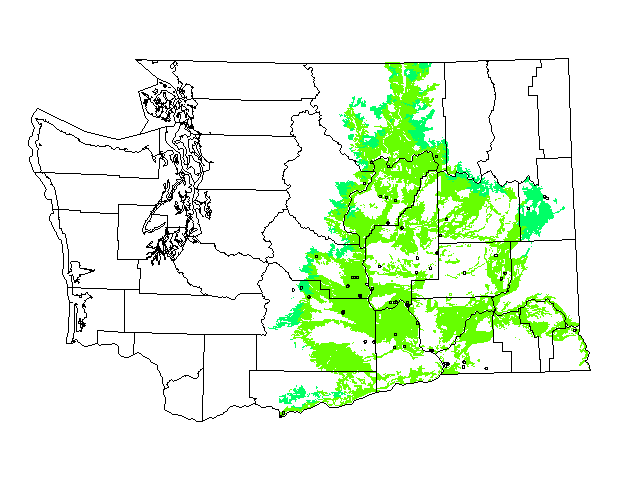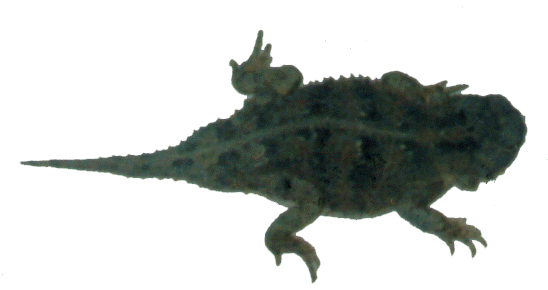Short-horned Lizard
Phrynosoma douglasii
by Karen M. Dvornich
How this all came about....
In 1997, 4th and 5th grade Waterville Elementary students told me they saw Short-horned lizards (commonly known as Horny toads) all around their area. I was very interested because these students provided more information than I had gathered from literature searches and museum specimen records for the Washington Gap Analysis Project (WAGAP); a biodiversity project I was working on at the University of Washington. Furthermore, the horned lizards (4 species) are the most common lizard in the US. Their numbers are dropping and we don't know why.
I asked their teachers if there was a way they could help us gather more life history data and locations on the
Horny toads. Finally, in 1999, the Adopt-a-Farmer idea sprang up and the preliminary results of this project were
explained by the students in their own words on this web site.
The Adopt-a-Farmer project has grown each year. The students and farmers are asking new questions and evaluating their data.
This web site will be updated annually.
 |
Washington Gap Analysis Project
The predicted range distribution (green) was created using 1991 Landsat TM satellite imagery, habitat association models and museum specimen data.
Click on the map to zoom into Douglas County
I sent the class a list of questions and the habitat classifications we used
for Gap Analysis.
|
The students created data collection and habitat forms for the farmers to carry on their tractors.
Washington Department of Fish and Wildlife provided disposable cameras and rulers, so the students could document their work and take precise measurements of the lizards.
The Adopt-a-Farmer Project has not only created a task-force of young herpetologists, but young scientists who learned to ask a question, gather and analyze their data using the latest technology, and involve their community in the process. These students are justifiably proud of their work, as I am of them.
This web site was designed to communicate their methods to other schools interested in conducting Short-horned lizard
studies. If you want to begin a similar project and want to contact the students, send messages to me (vicon@uw.edu).
Visit Idaho State University's Digital Atlas web site to learn more about the Short-horned lizard in Idaho.
 Back to the Home Page
Back to the Home Page
